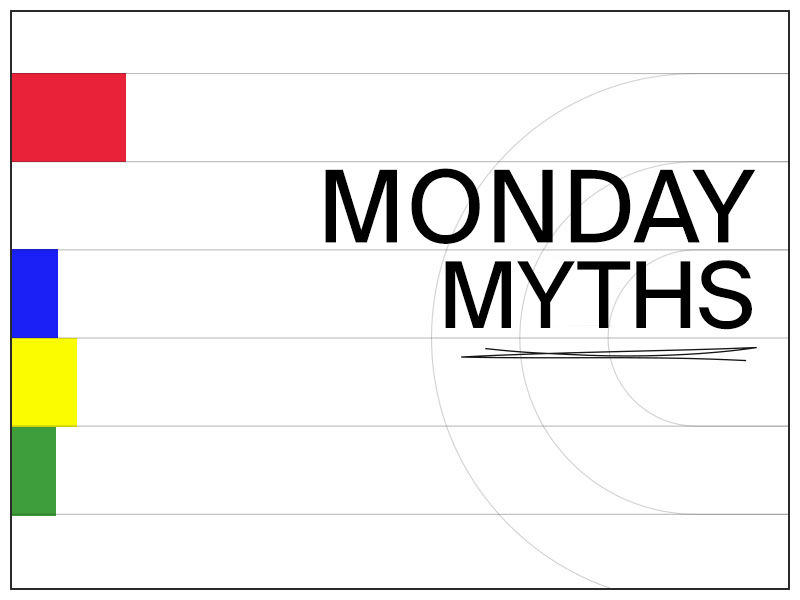by Jeremy Plonk
February 22, 2021

Welcome to a new handicapping series for our Monday blog space entitled “Monday Myths.” Each week I’ll use the power of the Betmix database to take common handicapping assumptions and either support or dispel them with data. Betmix data powers the 1/ST BET app and its features like Angler and Birddog give data-minded horseplayers a treasure trove of information in which to query your own curiosities.
Assumption:
Horses make their biggest improvement between their first and second start.
Background:
A time-honored, bandied-about phrase among handicappers and horsemen has been that you can expect a horse making his or her second start to show their biggest leap forward in their career. The assumption is that the initial experience and a more seasoned and fit runner in the second appearance provides a recipe for instant improvement.
Data Points:
I crunched the numbers in the Betmix database for every Thoroughbred race in North America over the past 5 years, going back to Feb. 22, 2016. I looked at all starters who were making their first, second, third, fourth, fifth, sixth, seventh, eighth, ninth and tenth career starts. Their average finish position (placing), win percentage and $1 return on investment was tracked. The initial study included all field sizes, a secondary study looked only at field sizes of 8 or more runners so not to skew the average finishing position numbers with small field sizes.
Overall Findings:
First-time starters had an average finishing position of 5.30, a 10.0% win rate and a $.80 ROI for every $1 bet.
Second-time starters had an average finishing position of 5.00, an 11.9% win rate and a $.73 ROI for every $1 bet.
Third-time starters had an average finishing position of 4.94, an 11.8% win rate and a $.66 ROI for every $1 bet.
Fourth-time starters had an average finishing position of 4.73, a 13.0% win rate and a $.72 ROI for every $1 bet.
Fifth-time starters had an average finishing position of 4.62, a 13.7% win rate and a $.75 ROI for every $1 bet.
Sixth-time starters had an average finishing position of 4.53, a 14.2% win rate and a $.73 ROI for every $1 bet.
Seventh-time starters had an average finishing position of 4.46, a 14.3% win rate and a $.75 ROI for every $1 bet.
Eighth-time starters had an average finishing position of 4.37, a 15.4% win rate and a $.83 ROI for every $1 bet.
Ninth-time starters had an average finishing position of 4.55, a 14.6% win rate and a $.81 ROI for every $1 bet.
Tenth-time starters had an average finishing position of 4.44, a 14.8% win rate and a $.83 ROI for every $1 bet.
Overall Findings Verdict:
Second-time starters showed the biggest improvement in average finish position at .30 better per starter and also showed the largest increase in win percentage between starts at +1.90%. They’re not necessarily a great bet, however, as the public is on to this and the ROI is a soft $0.73. Very interestingly, the worst ROI to bet is a third-time starter at $0.66, coming immediately after that noticeable improvement in the second start. The public falsely expects the improvement to continue, but the average finish position in the third start makes the most negligible improvement in the study (just .06 better) and the win percentage actually drops a tiny tick. Also note, a horse’s average finish position improved slightly at every start until they reached their ninth career start.
The same numbers bore out when you factored the study for field size of 8 or more starters. The average finish position of second-time starters was .38 better than debut runners, easily the largest improvement between any set of starts from first through tenth.
Bottom line:
This old handicapping saw is sharp. Indeed, second-time starters do show the most improvement and the numbers bear that out. We also learned that the public fails to absorb this information properly. Improvement from start one to start two should not be immediately trusted to continue, and it’s a bad bet to assume it will.
Additional Details:
You can go into Betmix and run your own queries for a deeper dive into this theory and any that you can create. For instance, take a look at the tracks you play most often to see if they fall in line with this study’s conclusions. I took a second dive by examining second-time starters who broke their maiden at first asking and then faced winners. Those debut winners had a better second-time average finish position (4.35) against winners next time than those second-timers who lost their debuts and were back against maidens (5.11).